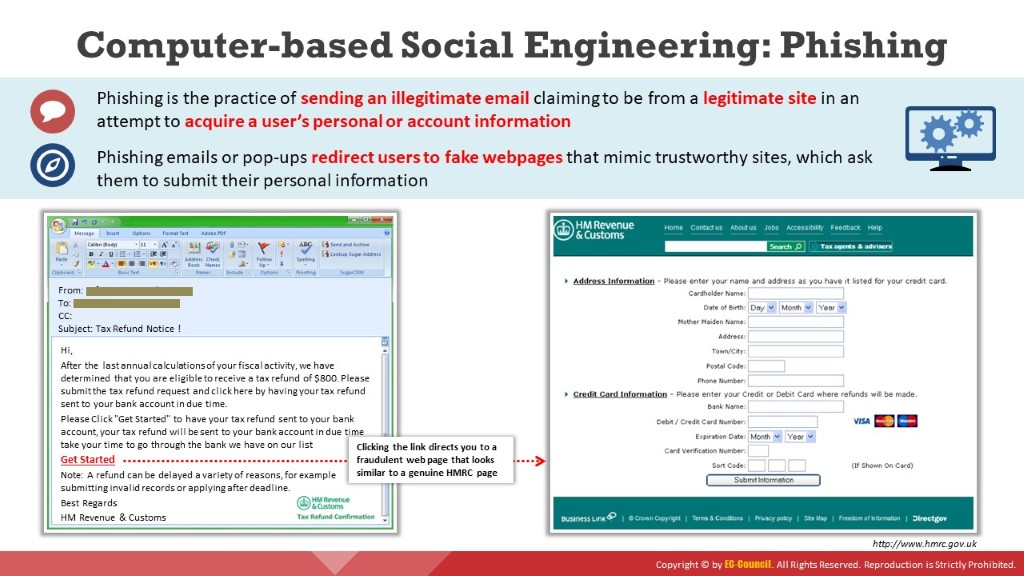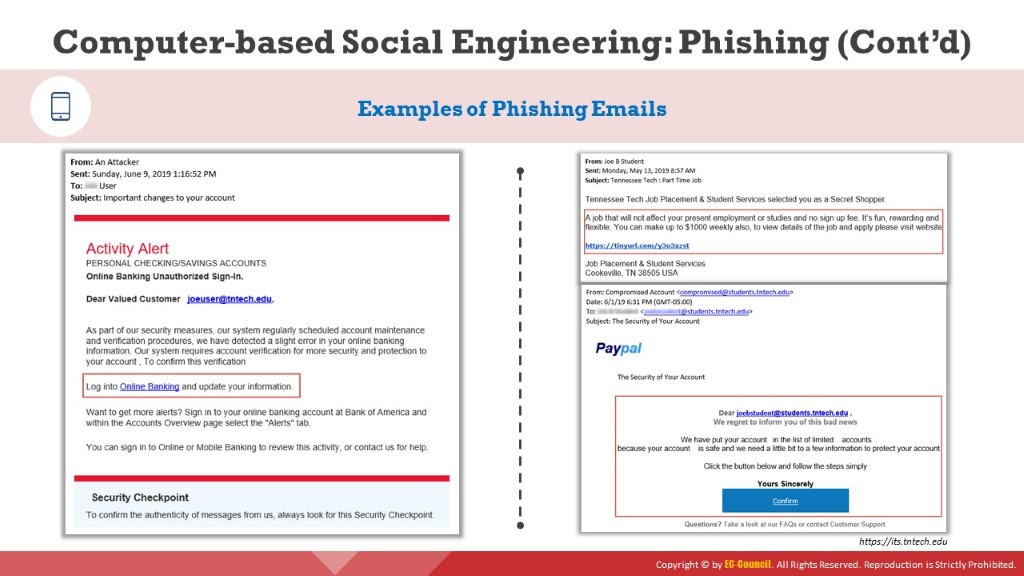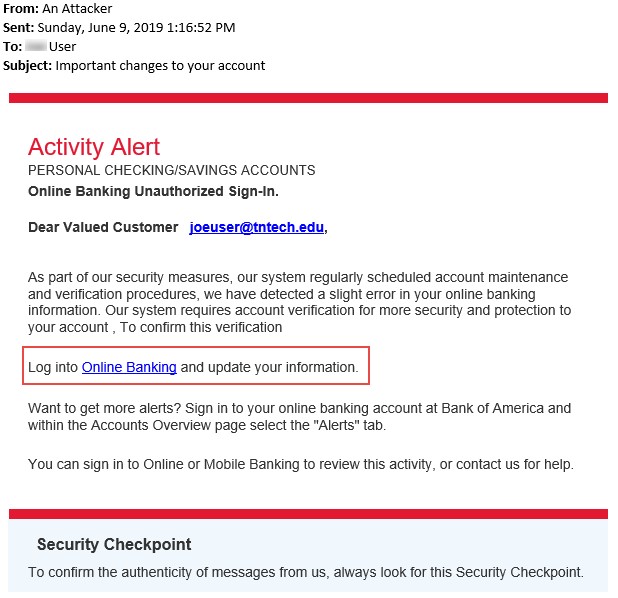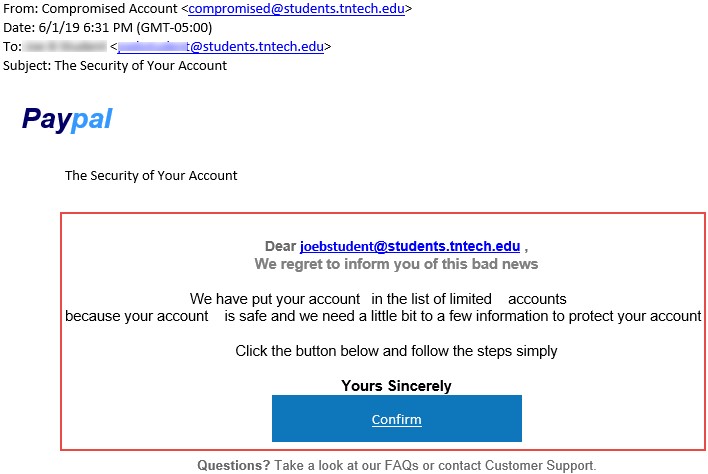


Phishing is a technique in which an attacker sends an email or provides a link falsely claiming to be from a legitimate site to acquire a user’s personal or account information. The attacker registers a fake domain name, builds a lookalike website, and then mails the fake website’s link to users. When a user clicks on the email link, it redirects them to the fake webpage, where they are lured into sharing sensitive details such as their address and credit card information. Some of the reasons behind the success of phishing scams include users’ lack of knowledge, being visually deceived, and not paying attention to security indicators.
The screenshot below is an example of an illegitimate email that claims to be from a legitimate sender. The email link redirects users to a fake webpage and asks them to submit their personal or financial details.

Figure 5.2: Screenshot showing the phishing technique
Examples of Phishing Emails
Source: https://its.tntech.edu
Today, most people use internet banking. Many people use Internet banking for all their financial needs, such as online share trading and e-commerce. Phishing involves fraudulently acquiring sensitive information (like passwords and credit card details) by masquerading as a trusted entity.
The target receives an email that appears to be from the bank and requests the user to click on the URL or the link provided. If the user is tricked and provides their username, password, and other information, then the site forwards the information to the attacker, who will use it for nefarious purposes.

Figure 5.3: Screenshot showing a phishing email

Figure 5.4: Screenshot showing a phishing email

Figure 5.5: Screenshot showing a phishing email
Types of Phishing
- Spear Phishing
Instead of sending out thousands of emails, some attackers opt for “spear phishing” and use specialized social engineering content directed at a specific employee or small group of employees in an organization to steal sensitive data such as financial information and trade secrets.
Spear phishing messages seem to come from a trusted source with an official-looking website. The email also appears to be from an individual from the recipient's company, generally someone in a position of authority. In reality, the message is sent by an attacker attempting to obtain critical information about a specific recipient and their organization, such as login credentials, credit card details, bank account numbers, passwords, confidential documents, financial information, and trade secrets. Spear phishing generates a higher response rate compared to a normal phishing attack, as it appears to be from a trusted company source. - Whaling
A whaling attack is a type of phishing that targets high profile executives like CEO, CFO, politicians, and celebrities who have complete access to confidential and highly valuable information. It is a social engineering trick in which the attacker tricks the victim into revealing critical corporate and personal information (like bank account details, employee details, customer information, and credit card details), generally, through email or website spoofing. Whaling is different from a normal phishing attack; the email or website used for the attack is carefully designed, usually targeting someone in the executive leadership. - Pharming
Pharming is a social engineering technique in which the attacker executes malicious programs on a victim’s computer or server, and when the victim enters any URL or domain name, it automatically redirects the victim’s traffic to an attacker-controlled website. This attack is also known as “Phishing without a Lure.” The attacker steals confidential information like credentials, banking details, and other information related to web-based services.
Pharming attack can be performed in two ways: DNS cache poisoning and host file modification. Pharming attacks can also be performed using malware like Trojan horses or worms. - Spimming
SPIM (Spam over Instant Messaging) exploits Instant Messaging platforms and uses IM as a tool to spread spam. A person who generates spam over IM is called Spimmer. Spimmers generally make use of bots (an application that executes automated tasks over the network) to harvest Instant Message IDs and forward spam messages to them. SPIM messages, like email spam, generally include advertisements and malware as an attachment or embedded hyperlink. The user clicks the attachment and is redirected to a malicious website that collects financial and personal information like credentials, bank account, and credit card details.